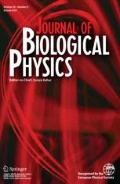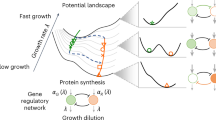Abstract
Cells accomplish the process of fate decisions and form terminal lineages through a series of binary choices in which cells switch stable states from one branch to another as the interacting strengths of regulatory factors continuously vary. Various combinatorial effects may occur because almost all regulatory processes are managed in a combinatorial fashion. Combinatorial regulation is crucial for cell fate decisions because it may effectively integrate many different signaling pathways to meet the higher regulation demand during cell development. However, whether the contribution of combinatorial regulation to the state transition is better than that of a single one and if so, what the optimal combination strategy is, seem to be significant issue from the point of view of both biology and mathematics. Using the approaches of combinatorial perturbations and bifurcation analysis, we provide a general framework for the quantitative analysis of synergism in molecular networks. Different from the known methods, the bifurcation-based approach depends only on stable state responses to stimuli because the state transition induced by combinatorial perturbations occurs between stable states. More importantly, an optimal combinatorial perturbation strategy can be determined by investigating the relationship between the bifurcation curve of a synergistic perturbation pair and the level set of a specific objective function. The approach is applied to two models, i.e., a theoretical multistable decision model and a biologically realistic CREB model, to show its validity, although the approach holds for a general class of biological systems.






Similar content being viewed by others
References
Graham, T.G.W., Tabei, S.M.A., Dinner, A.R., Ilaria, R.: Modeling bistable cell-fate choices in the Drosophila eye: Qualitative and quantitative perspectives. Development 137, 2265–2278 (2010)
Kimble, J.: Molecular regulation of the mitosis/meiosis decision in multicellular organisms. Cold Spring Harb. Perspect. Biol. 3, a002683 (2011). doi:10.1101/cshperspect.a002683
LaBarge, M.A., Nelson, C.M., Villadsen, R., Fridriksdottir, A., Ruth, J.R., Stampfer, M.R., Petersen, O.W., Bissell, M.J.: Human mammary progenitor cell fate decisions are products of interactions with combinatorial microenvironments. Integr. Biol. (Camb.) 1, 70–79 (2009)
Louzoun, Y., Xue, C., Lesinski, G.B., Friedman, A.: A mathematical model for pancreatic cancer growth and treatments. J. Theor. Biol. 351, 74–82 (2014)
Zhao, G., Dharmadhikari, G., Maedler, K., Meyer-Hermann, M.: Possible role of interleukin-1 in type 2 diabetes onset and implications for anti-inflammatory therapy strategies. PLoS Comput. Biol. 10, e1003798 (2014)
Kuznetsov, Y.A.: Elements of Applied Bifurcation Theory. Springer, New York (1998)
Guantes, R., Poyatos, J.F.: Multistable decision switches for flexible control of epigenetic differentiatioin. PLoS Comput. Biol. 4, e1000235 (2008)
Wang, R.Q., Liu, K., Chen, L., Aihara, K.: Neural fate decisions mediated by trans-activation and cis-inhibition in notch signaling. Bioinformatics 27, 3158–3165 (2011)
Angeli, D., Ferrell, J.E., Sontag, E.D.: Detection of multistability, bifurcations, and hysteresis in a large class of biological positive-feedback systems. Proc. Natl. Acad. Sci. U.S.A. 101, 1822–1827 (2004)
Wang, G.Y.: Singularity analysis of the AKT signaling pathway reveals connections between cancer and metabolic diseases. Phys. Biol. 7, 046015 (2010). doi:10.1088/1478-3975/7/4/046015
Xiong, W., Ferrell, J.E.: A positive-feedback-based bistable “memory module” that governs a cell fate decision. Nature 426, 460–465 (2013)
Benedito, R., Roca, C., Srensen, I., Adams, S., Gossler, A., Fruttiger, M., Adams, R.H.: The notch ligands Dll4 and Jagged1 have opposing effects on angiogenesis. Cell 137, 1124–1135 (2009)
Bollenbach, T., Kishony, R.: Resolution of gene regulatory conflicts caused by combinations of antibiotics. Mol. Cell 42, 413–425 (2011)
Hayward, P., Brennan, K., Sanders, P., Balayo, T., DasGupta, R., Perrimon, N., Arias, A.M.: Notch modulates wnt signalling by associating with Armadillo/beta-catennin and regulating its transcriptional activity. Development 132, 1819–1830 (2005)
Keith, C.T., Borisy, A.A., Stockwell, B.R.: Mulicomponent therapeutics for networked systems. Nat. Rev. Drug Discov. 4, 71–78 (2005)
Lehar, J., Krueger, A.S., Avery, W., Heilbut, A.M., Johansen, L.M., Price, E.R., Rickles, R.J., Short, G.F. III, Staunton, J.E., Jin, X., Lee, M.S., Zimmermann, G.R., Borisy, A.A.: Synergistic drug combinations tend to improve therapeutically relevant selectivity. Nat. Biotechnol. 27, 659–666 (2009)
Lehar, J., Zimmermann, G.R., Krueger, A.S., Molnar, R.A., Ledell, J.T., Heilbut, A.M., Short, G.F. III, Gusti, L.C., Nolan, G.P., Magid, O.A., Lee, M.S., Borisy, A.A., Stockwell, B.R., Keith, C.T.: Chemical combination effects predict connectivity in biological systems. Mol. Syst. Biol. 3, 80 (2007)
Dixon, J.E., Shah, D.A., Rogers, C., Hall, S., Weston, N., Parmenter, C.D.J., McNally, D., Denning, C., Shakesheff, K.M.: Combined hydrogels that switch human pluripotent stem cells from self-renewal to differentiation. Proc. Natl. Acad. Sci. U.S.A. 111, 5580–5585 (2014)
Nelander, S., Wang, W., Nilsson, B., She, Q.B., Pratilas, C., Rosen, N., Gennemark, P., Sander, C.: Models from experiments: Combinatorial drug perturbations of cancer cells. Mol. Syst. Biol. 4, 216 (2008). doi:10.1038/msb.2008.53. Epub 2008 Sep 2
Sun, X., Bao, J., Nelson, K.C., Li, K.C., Kulik, G., Zhou, X.: Systems modeling of anti-apoptotic pathways in prostate cancer: Psychological stress triggers a synergism pattern switch in drug combination therapy. PLoS Comput. Biol. 9, e1003358 (2013). doi:10.1371/journal.pcbi.1003358
Chou, T.C.: Theoretical basis, experimental design, and computerized simulation of synergism and antagonism in drug combination studies. Pharmacol. Rev. 58, 621–681 (2006)
Chou, T.C.: Preclinical versus clinical drug combination studies. Leukemia Lymphoma 49, 2059–2080 (2008)
Chou, T.C.: Drug combination studies and their synergy quantification using the Chou-Talalay method. Cancer Res. 70, 440–446 (2010)
Fitzgerald, J.B., Schoeberl, B., Nielsen, U.B., Sorger, P.K.: Systems biology and combination therapy in the quest for clinical efficacy. Nat. Chem. Biol. 2, 458–466 (2006)
Loewe, S.: The problem of synergism and antagonism of combined drugs. Arzneimittelforschung 3, 285–290 (1953)
Bliss, C.I.: The calculation of microbial assays. Bacteriol. Rev. 20, 243–258 (1956)
Greco, W.R., Bravo, G., Parsons, J.C.: The search for synergy: A critical review from a response surface perspective. Pharmacol. Rev. 47, 331–385 (1995)
Zhang, Y., Smolen, P., Baxter, D.A., Byrne, J.H.: Computational analyses of synergism in small molecular network motifs. PloS Comput. Biol. 10, e1003524 (2014)
Yang, K., Bai, H., Ouyang, Q., Lai, L., Tang, C.: Finding multiple target optimal intervention in disease related molecular network. Mol. Syst. Biol. 4, 228 (2008). doi:10.1038/msb.2008.60
Yin, N., Ma, W., Pei, J., Ouyang, Q., Tang, C., Lai, L.: Synergistic and antagonistic drug combinations depend on network topology. PLoS ONE 9, e93960 (2014). doi:10.1371/journal.pone.0093960
Chickarmane, V., Troein, C., Nuber, U.A., Sauro, H.M., Peterson, C.: Transcriptional dynamics of the embryonic stem cell switch. PLoS Comput. Biol. 2, e123 (2006)
Huang, S., Guo, Y.P., May, G., Enver, T.: Bifurcation dynamics in lineage-commitment in bipotent progenitor cells. Dev. Biol. 305, 695–713 (2007)
Roeder, I., Glauche, I.: Towards an understanding of lineage specification in hematopoietic stem cells: a mathematical model for the interaction of transcription fators GATA-1 and PU-1. J. Theor. Biol. 241, 852–865 (2006)
Lonze, B.E., Ginty, D.D.: Function and regulation of CREB family transcription factors in the nervous system. Neuron 35, 605–623 (2002)
Song, H., Smolen, P., Av-Ron, E., Baxter, D.A., Byrne, J.H.: Dynamics of a minimal model of interlocked positive and negative feedback loops of transcriptional regulation by cAMP-response element binding proteins. Biophys. J. 92, 3407–3424 (2007)
Nissim, L., Perli, S.D., Fridkin, A., Perez-Pinera, P., Lu, T.K.: Multiplexed and programmable regulation of gene networks with an integrated RNA and CRISPR/Cas toolkit in human cells. Molecular Cell 54, 698–710 (2014)
Bijnsdorp, I.V., Giovannetti, E., Peters, G.J.: Analysis of drug interactions. Methods Mol. Biol. 731, 421–434 (2011)
Marchetti, C., Tafi, E., Middei, S., Rubinacci, M.A., Restivo, L., Ammassari-Teule, M., Marie, H.: Synaptic adaptations of CAI pyramidal neurons induced by highly effective combination antidepressant therapy. Biol. Psychiatry 67, 146–154 (2009)
Axelrod, M., Gordon, V.L., Conaway, M., Tarcsafalvi, A., Neitzke, D.J., Gioeli, D., Weber, M.J.: Combinatorial drug screening identifies compensatory pathway interactions and adaptive resistance mechanisms. Oncotarget 4, 622–635 (2013)
Acknowledgments
The authors would like to thank the anonymous reviewers for their valuable comments and suggestions. This research is supported by the National Natural Science Foundation of China (No. 11171206).
Author information
Authors and Affiliations
Corresponding author
Rights and permissions
About this article
Cite this article
Liu, Y., Li, S., Liu, Z. et al. Bifurcation-based approach reveals synergism and optimal combinatorial perturbation. J Biol Phys 42, 399–414 (2016). https://doi.org/10.1007/s10867-016-9414-7
Received:
Accepted:
Published:
Issue Date:
DOI: https://doi.org/10.1007/s10867-016-9414-7




